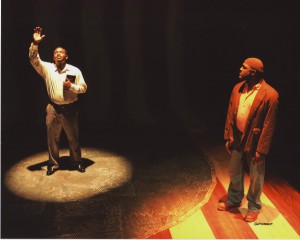April 8: Here is your next reading, in pdf format. Please extract three quotes from it that you find most inspiring. Type and print them yourself on paper. Paste the paper near you desk/workspace/where you will see them all the time. Show me a photo of where you posted the paper.
These two chapters are excerpted from a larger book on what it’s really like to be a fiction writer. Hope you enjoy — even though you are not writing fiction, you are writing fact!:
http://engl210-picetti.wikispaces.umb.edu/file/view/Lamott_Bird+by+Bird.pdf
Welcome to April, Research Paper Month. Your First Draft is due on April 19. A first draft is required.
Your 5-minute presentation dates are listed on the calendar, above. The class is divided in half, alphabetically A – I goes on April 5; J – Z goes on April 7. We want to hear about your research paper topics — your ideas, sources, and what your thesis/main objective is.
Your next paper assignment is due on March 22. Here are the parameters.
Write without using the definite article; put simply: do not use the word “the.”
Length: 500 words.
Format: Typed, double spaced.
Assignment Horizon as of March 7: You will have one more short paper assignment soon. Check back here for parameters. Also, we will begin to brainstorm on your topics for your research papers. We will do this in groups in class.
Next Paper due March 15. Instructions below.
Greetings: It’s now March 2nd, and you have some new assignments. First: be prepared to read and share the Inner/Outer Dialogues you recorded on March 1st in class time on March 3rd. You will be asked to do this same assignment again, on your own, only for longer stretches of time — on the subway, in a coffee shop, waiting for a bus, in a public place…you name it!
In case you missed it, here is the small journal assignment, once again, in a nutshell:
Inner Dialogue/Outer Dialogue::
How to do it: Use your small journals. Go out into the world — places listed as above, really any spot where you can be around people of your choosing — and write down what’s being said around you, what you hear around you (sounds can count; the conductor on the subway announcing a stop can count); write down what’s going on in your head as well — your own “inner dialogue.”
After you get two or three good sessions of Dialogue listening and recording in your small Journals, and you share them in class, you will pick one good chunk of inner/outer (you choose) and type them up. This will lead to:
Your Second Typed Paper Assignment, Due March 15.
Choose a dialogue or conversation (either Inner or Outer or Both) that you have already built/recorded in your Journals. Introduce it with a paragraph that sets the context for it so the reader will understand. Transcribe the dialogue/conversation. You can add an extra paragraph anywhere else in this transcription — in the middle, at the end — that adds further commentary or reflection or summation or most importantly tells how you felt about this dialogue — we want to hear your personal takeaway. Any paragraph that you write, and is not plain transcription, should be in italics.
So, your paper might look something like this:
Name of Student: You
Name of Professor: Prof. Schmerler
Title and Section of Class: English 1121 D461
Date: February 26, 2016
[PARAGRAPH OF intro blah blah blah. for example…]This dialogue was observed by me on the A Train between West 4th Street in the Village and 59th Street in Midtown on Feb. 12. Two people got on the train and they sat next to me. One was dressed like a clown (Michael); the other was a lady of about 50 who seemed to know the man previously, but I wasn’t sure…..etc etc etc etc…blah blah.
Sarah: “Why are you on the subway?”
Michael: “Hey, stop being hostile — anyone can ride the subway.”
Sarah: “Michael, you should really get out of the way; that dancer is about to hit you in the face.”
Michael: “Thank you, wrist.”
ETc ETc. ETc.
[Paragraph of further reflection and observation and subjective takeaway]This exchange was punctuated with sounds from the train. It felt absurd, at times. It reminded me of……blah blah blah.
Or, It might look like this:
Scene: The Subway; 17 minutes pass; people get on and off the train. Lots of them start speaking at once, but a group of about 5 people standing near the door are audible. The date is Feb 16, and the subway is the A Train.
“Why are you on the subway?”
“Hey, stop being hostile — anyone can ride the subway.”
“Michael, you should really get out of the way; that dancer is about to hit you in the face.”
“Thank you, wrist.”
There is a woman, around 52 years old, with grey hair and blue glasses, smiling; she eventually gets mad. There is a man, about 40 who seems to know her, though they don’t get on the train together…..
Length of Paper: 500 Words
Due Date: Mar 15
Format: Double-spaced, typed, printed
You don’t necessarily have to use the person’s name, but do try to identify them in some way. When the dialogue overlaps, just keep going. You can also identify that another person is speaking by starting a new line, without identification.
Resources: Your textbook, Rules of Thumb, gives proper typing format for quotations. Please refer to it for guidance on punctuation. Pp 44 – 47.
Here is a link to how plays look, printed. You can use this format, too (also copied, below): http://ptfaculty.gordonstate.edu/lking/CPF_play_formatting2.pdf
A guide for punctuation is available Online at the Purdue Owl Site. If you don’t have Rules of Thumb, use this!:
Purdue Owl Link to Quotation Use
++++Please remember to put your Journals on the Desk on March 1st for a Journal Check.
This is your First Formal Reading Assignment. It goes in your Journal. It is not given a ‘letter grade,’ but is checked. This will be checked on Feb. 23rd.
Find three different reviews on a single movie. Your choice! Pick one you don’t mind reading a lot about. (Try sources like The New York Times, The New Yorker, Rolling Stone, The Daily News…)
Print out or buy these reviews.
Highlight them with your pens as we described in class. The breakdown is as follows for types of language:
Yellow: Description
Pink: Opinion
Blue: Analysis
Orange or Green: Context or Background
Do your best. Even when it is hard to discern which is which, just try. Come in ready to compare and contrast what you’ve read and learned from these different reviewers approaches (i.e., what kind of agenda they may have, what kind of agenda the newspaper or magazine may have…).
++++++++++++++++++++++++++++++++++++++++++++++++++++++++
MOVIE REVIEW ASSIGNMENT: This is your first formal paper for me. It will be double-spaced, typed. Printed one-sided. It is due on Feb. 25.
Here is the assignment:
Write a movie review.
Length: 500 words.
++++++++++++++++++++++++++++++++++++++++++
Your first Journal Check will be Feb. 23.
You are not given a letter grade on journal entries and exercises. Your Journal does, however, constitute your Class Participation grade (20% of your overall semester grade). I will give you a ‘check’ system, noting completion is satisfactory.
What is in your Journal?
Any and all of the in-class writings, the Do Now early class exercises, the homework. If you don’t come to class on time to do the Do Now writing, you should be prepared to show extra effort here. I will collect the journals, and then give them back to you.
I suggested, at the start of the semester, that you have not only a spiral notebook or two, but that you have a place to put these pages together with any handouts (namely, a folder dedicated to English 1101) so that I don’t have to hunt. I use a 3-ring binder myself. Once I’m done writing in my spiral notebook, I put those pages into the binder; my binder also has a pocket folder.
Right now, you have had no handouts/photocopies…however, you should plan for a system like mine, above.
+++++++++++++++++++++++++++++++++++++++++++++++++++++++++
Feb 4, 2016: Do another “dry, dusty, Martian, 5-minute description exercise.” (See entry for Feb. 2 for details.) Due Date: Feb. 9.
Bear in mind: Pick an object in the room with you, now — and I am going to assume you are Not in Namm 1107. Also: worry less about conveying what the object is to the reader, as if it were a game. Let the reader, possibly, fail, too. : ) You see, we are equal opportunity failures, here in English 1101 RTWH. Let it be boring, long, dull… if necessary.
Feb 2, 2016: In-class writing assignment. “Pick an object in the room and describe it; do not say its name or what it is used for; give us its appearance to the naked eye. Assume nothing. If you need further guidance with this exercise, consider this: If you were a Martian, and came down to Earth, having no knowledge of life or time or society here — how would you convey its pure, surface, appearance?”
Write for 5 minutes.
Bear in mind about the above exercise: You will most likely fail. That is way good. Keep at it. The way in which you fail will teach us a great deal about you, and about the process of writing in general.
Do the above, again, for homework. Due: Feb. 4, 2016








